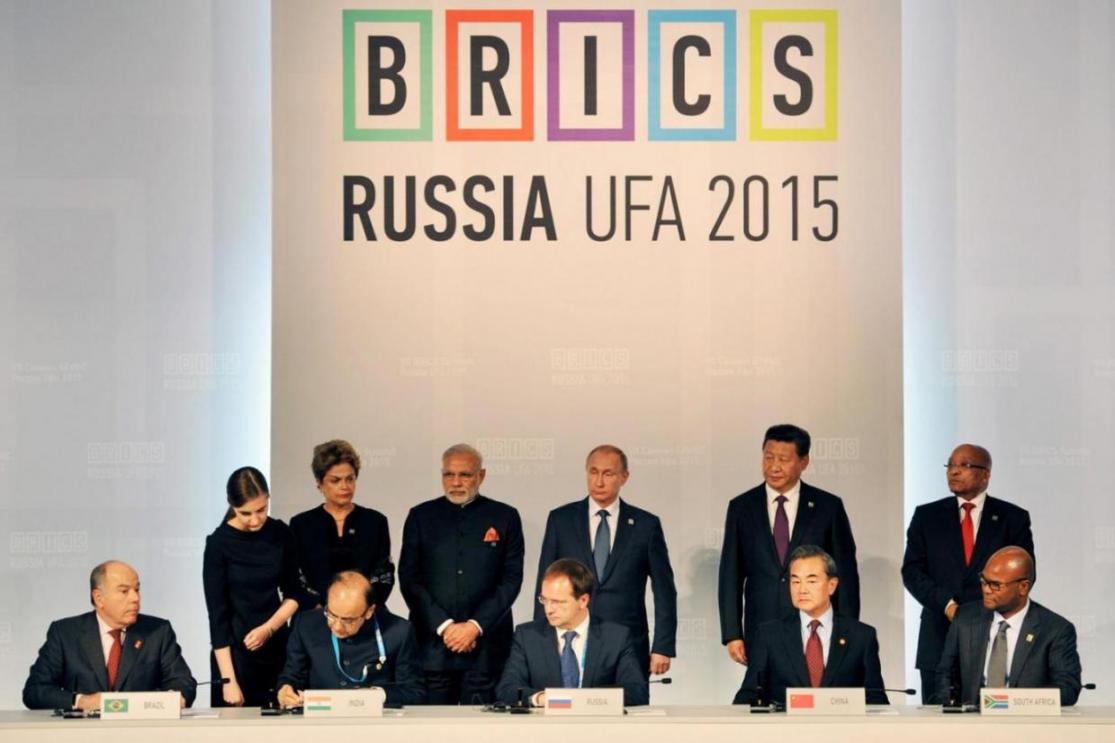As the focus of the West was fixated on Greece and Iran, the 7th BRICS Summit began a massive shift from a dialogue to an economic partnership–one whose full impact will be witnessed in the coming years.
The seventh BRICS Summit took place in Ufa, the capital of Russia’s Bashkortostan Republic. In the West, most observers were preoccupied with the “make-or-break” days of Greece, which accounts for less than 0.4% of the global economy, rather than the BRICS Summit, which represents about 20% of the world economy, EconoMonitor reported.
At the same time, the BRICS leaders pledged to forge a closer economic partnership, which will be the “key guideline” for expanding trade, investment and cooperation in broad areas, from manufacturing to energy. It was followed by the 15th Shanghai Cooperation Organization Summit, which is expected to start a critical enlargement process for India and Pakistan.
The neglect reflects the new conventional wisdom, which suggests that large emerging economies are actually increasingly marginal to the world economy, or as a Brookings pre-summit analysis put it: “The BRICS Summit: A shadow of the former self it never was.”
Conventional Wisdom
According to the new conventional wisdom, the BRICS bloc came into being during the turbulent days of the global financial crisis. For obvious reasons, it does not respond to the question ‘how’. In fall 2008, advanced economies were facing an economic abyss. The latter was only avoided with the support of G20–mainly by the large emerging BRICS economies.
According to the new conventional wisdom, the BRICS bloc is heralded as a grouping that would challenge the West for leadership in the international order. In reality, the BRICS grouping was created to complement–not to substitute–the existing international multilateral institutions.
Moreover, the International Monetary Fund, World Bank and World Trade Organization have never represented a truly international order. In the emerging world, they are seen as dominated by American, European and Japanese interests, as reflected by their voting quotas, investment allocations and the nationality of their leaders.
During the global crisis, the G7 nations gave their word to speed up reforms in the international institutions. After the crisis, those promises were first delayed, then forgotten. That’s why BRICS economies moved ahead on their own; not to replace the West, but to create adequate representation for emerging and developing economies.
Back in 2007, the US economy was still double the size of the BRICS economies. Today, the combined output of the latter nearly matches that of the US. What’s worse, the growth of all G7 nations is now reliant on historically low policy rates and quantitative easing, which is paving way to new and potentially destructive asset bubbles.
In this environment, the BRICS economies continue to have inherent growth potential that can support the world economy another decade or two.
Forces Behind BRICS Push
There are three new forces that motivate China’s BRICS efforts. Beijing has initiated a series of huge infrastructure projects that can fuel markets for years to come. The “One Belt, One Road” initiative has potential to uplift modernization in China and in and beyond its regional neighborhood. As Beijing seeks to couple the initiative with the BRICS goals, economic development is likely to accelerate from East and Southeast Asia to South Asia, Eurasia, Africa and the Americas.
These massive initiatives will be supported by the Asian Infrastructure Investment Bank and the BRICS nations’ New Development Bank.
Ufa witnessed the launch of the $100 billion BRICS Bank and a reserve currency pool worth another $100 billion. In turn, the registered capital of the AIIB amounts to $100 billion, with half from Beijing and the rest from the other founding members.
From now through 2030, the world will need to spend at least $57 trillion to build the ports, power plants, rails, roads, telecoms, water systems, and other infrastructure that the global economy needs.


